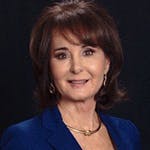I met with a CFO several years ago who was quick to say he thought business insurance was “a pain in my butt.” But what I came to learn was that it wasn’t insurance that made him miserable, it was a whopping 1.37 experience mod driving up his workers’ comp premiums that was threatening to put him out of business. It was obvious that just saving money wasn’t going to help him stay in business. He needed desperately to get his house in order.
Workplace safety was a major issue at his business, a virtual minefield of accidents waiting to happen with no hope of safely navigating them unless some changes were made quickly. We implemented an onsite triage service to handle injuries that didn’t need to be ambulatory, which eliminated over half of all his claims. We implemented supervisor training, assisted in establishing a strong return-to-work program, and made it a point to get feedback from his employees for improving safety and productivity. His experience mod went from 1.37 down to 0.89. And now he looks like a hero.
Ultimately, the problem here was that for this CFO making money was a priority over workplace safety. That sounds harsh, but it’s not intended to sound that way. I am sure it wasn’t a scenario where he chose to save money by not purchasing personal protection equipment. It was simply that as the CFO of a big company his eye – and his obligation-- were on the bottom line and not whether or not safety guards were in place on machines.
And it was obvious he had never read the book The Power of Habit, the story of Paul O’Neill, former CEO of the giant aluminum processing company Alcoa.
When Alcoa hired Paul O’Neill as CEO many years ago, he stunned his first stockholder’s meeting by saying his top priority wasn't the company's bottom line, it was tracking lost time injuries of all employees. As you might imagine it was not a well-received speech to a roomful of people there for no other purpose than to see profits rise.
Through O'Neill's commitment, Alcoa created a policy in which every plant manager had to report every injury to O’Neill within 24 hours of its occurrence. Each Friday a report was sent to the home office of what injuries occurred during the week and what corrective action was planned. The report was distributed company wide. As a result, employee engagement became a key component, though it came at a cost. Alcoa suffered a horrific accident when an employee who had just joined the company because he needed benefits for his pregnant wife and their growing family, noticed that a large piece of equipment was not working and took the initiative to try and repair it himself. He jumped over a yellow safety wall surrounding the machinery and walked across the pit. There was a piece of aluminum jammed into the hinge on a swinging six-foot arm. The young man pulled on the aluminum scrap and removed it. But the arm restarted and swung towards his head. When it hit, he was killed instantly. Fourteen hours later, O’Neill ordered all the plant executives into an emergency meeting. For much of the day they painstakingly re-created the accident with diagrams and by watching video tapes over and over again. They identified dozens of errors that had contributed to the death.
Paul O’Neill knew that safety is not an expense but an opportunity to increase profit and employee engagement, reduce medical and workers' comp costs and improve the bottom line.
Within a week of that meeting, all the safety railings at Alcoa plant were painted bright yellow and new policies were written up. Employees were told not to be afraid to suggest proactive maintenance. And O’Neill sent a note to every worker telling them to call him at home if managers didn't follow up on their safety suggestions. Workers started calling, but they didn't want to talk about accidents. They wanted to talk about all these other great ideas they had.
For instance, the Alcoa plant that manufactured aluminum siding for houses had been struggling for years because executives were trying to anticipate popular colors and inevitably guessed wrong. One day, a lower-level employee made a suggestion that quickly worked its way to the general manager. If they grouped all the painting machines together they could switch out the pigments faster and become more nimble in responding to customer demand. As a result, within a year profits on aluminum siding doubled. It turns out this employee had been suggesting this idea for years but hadn't told anyone in management. But once O’Neil opened the door for more communication regarding safety recommendations, why not tell them about this other idea he had? It was like someone had dropped a winning lottery number in Alcoa’s lap.
Within a year of O'Neill's speech, Alcoa's profits would hit a record high. By the time O'Neill retired in 2000 to become Treasury secretary, the company's annual net income was five times larger than before he arrived, and its market capitalization had risen by $27 billion. Someone who invested a million dollars in Alcoa on the day O'Neill was hired would have earned another million dollars in dividends while he headed the company, and the value of their stock would be five times bigger when he left. What's more, all that growth occurred while Alcoa became one of the safest companies in the world. They cut their injury rate by 50% and their lost time by one-third the U.S. average.
O’Neill developed what he called a “keystone habit.” Safety was his keystone habit. When management gets a keystone habit engrained in employees’ minds, other habits change and change positively. Alcoa discovered that the most productive and the most efficient processes were also the safest. So every time Alcoa made a safety upgrade, it added to its profitability because the company operated more efficiently. O’Neill knew that safety is not an expense but an opportunity to increase profit and employee engagement, reduce medical and workers' comp costs and improve the bottom line.
Does this sound like your company? If not, it should.

